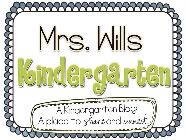
I am really excited for all the learning I'm going to be doing this summer! I'm participating in two book group discussions; on math work stations and Sharon Taberski's new book
Comprehension from the Ground Up. I'll be attending several PD workshops offered by the special school district of St. Louis. I might also have the opportunity to attend Sharon Taberski's workshop on July 6th. I just heard about this last opportunity this morning and I'm hoping it works out.
I've never done one of these linky party things but I'm really excited about this book and how I can teach math more like Daily 5. I think by blogging my ideas it will give me a chance to really think through what I want to do and plan to do and hopefully by entering my voice into the discussion that will not only help me but also maybe help a few others. I've been teaching math within a workshop model for the past two years but my work stations have been more like centers than stations and not quite organized enough.
To follow the discussion of chapters 1 & 2 link over to Mrs. Wills Kindergarten by clicking on the button below.

Here's my thoughts ...
In figure 1.2 on p16 Debbie shares the differences between work stations and centers.
1) Materials are used by the teacher and students during instruction first. ... I do this most of the time. But because I teach three different math groups at different levels of instruction and often times on completely different concepts because they are ready to move on at different rates, there are often items in the math area for independent use that not all of my kids know how to use. I like the idea of differentiating materials within the station area. My class is relatively small compared to most classes (topping out any year at 18 - next year my class size right now is around 10) so I might be able to have some stations designated for each group and a few to share with differentiation within the station box.
2) Stations do not change weekly. I already do this. Although sometimes I keep too much at the station and just add more. I've seen this past year with some kids that when having too many choices, kids are overwhelmed and can't make a choice at all.
3) All students go to workstations daily. For the past two years what I've done is have a rotation with three different groups of students: the red, the blue, and the orange. Each group would take a turn with me, doing independent work, and doing practice work which was part of or the whole worksheet that went along with the lesson I taught. I'm a little hesitant to go completely away from worksheets. I realize that hands on learning is integral to understanding and retaining what each child learns but I wrestle with taking away worksheets completely and kids not knowing how to answer questions through that media when needed.
4) Materials are differentiated for students. This has been a struggle in the past - I look forward to maybe doing the different boxes for different groups idea and differentiating by colored sticker within shared boxes.
5) Teacher observes individuals at work or meets with small math groups. Done.
For the past two years I have kept my math stations on a book shelf and under a table at the back of my room. Hopefully a video I created at the beginning of this past school year will upload so you can see what it looked like before it began morphing this school year. I have a small space in my room and its actually a large room that was once two rooms so it still has a divider in the middle and is awkward in creating little spaces because it is so narrow and does not have so much wall space. I hope to change up a little how I organize my math work station area for next year. I will probably use this same book shelf but put the stations in numbered containers rather than just putting all the manipulatives out and expecting the students to remember what to do with them. Because I have less students next year than I had this year I hope to move my computers to the tall table and have them available more often next year with math and word games.
There is a closet right next to this space in which I have organized all my math materials. I'm naturally a very organized person and like to keep things that way. So I have all my materials already sorted by topic and in bins that are easily stackable. My problem comes when things don't fit in the bins and I have to put them next to the bin, then I usually forget that I have them.
I don't have any pictures of my math area right now and it's not a very good time to take them since I am in the process of cleaning up and putting away everything in my room. Maybe I'll take some and upload later.

 tion.
tion.



